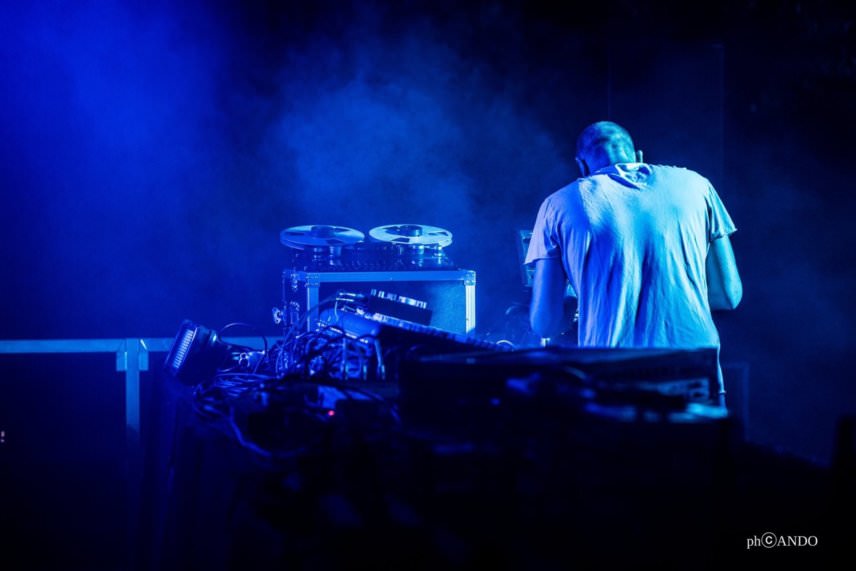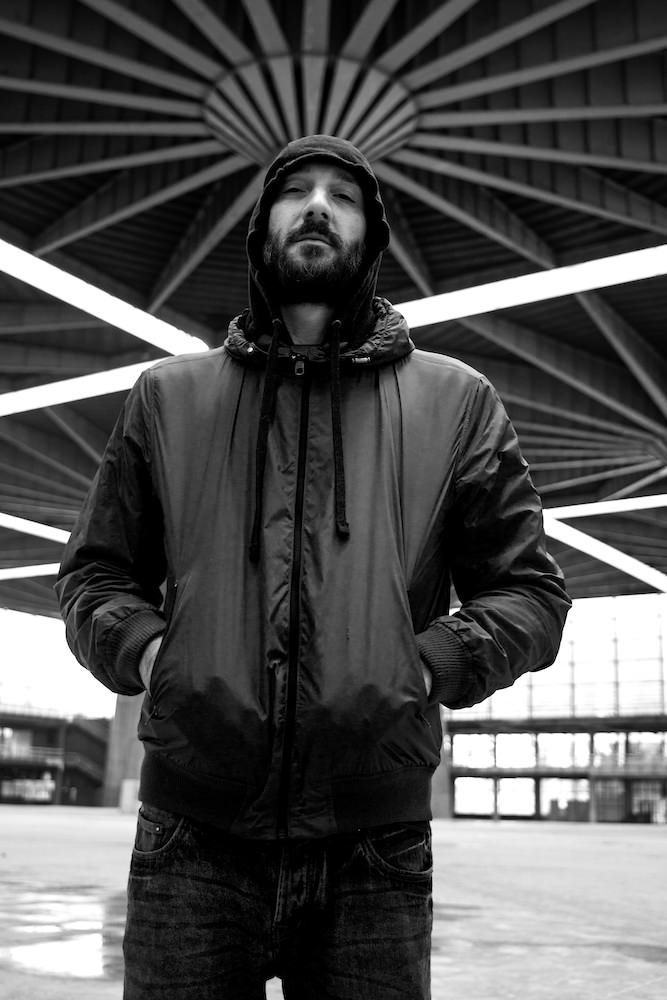Italy’s Phoet releases his debut album ‘Broken Symmetry’ on April 5th, an album built from a beautiful yet haunting and deeply personal concept. Speaking over Skype from his Turin studio, Phoet talks about time, loss, and how he changed everything for his debut album.
Time is the beating heart of our human experience. It slows down when we’re bored, stands still when we’re frightened, slides past when we’re not paying attention, and flies by when we’re having fun. When someone’s time is up, they die. When time starts anew, life is born and reborn. On a larger and more literal scale, time is altered by your speed or relation to other objects in the universe, as Einstein’s theory of relativity showed. But time itself is hardly universal. At the most fundamental levels of the universe, time ceases to exist. On the quantum level, there is no past and no future, only chaos, suggesting that time as we know it is a human construct, and a shoddy one at that. While counting the days and hours is useful in marking our march through life, it’s far less accurate in describing how time itself really works.

These ideas are at the core of Italian theoretical physicist Carlo Rovelli’s book, The Order of Time, and are a constant thread throughout Broken Symmetry, the debut album from Italy’s Phoet, who drew heavy inspiration from Rovelli’s book for the album. But the body of work is also highly personal, born from an epiphany he had on a beach three years ago, and out of a desperate need for change following a deeply personal trauma.
“I was on a beach in Portugal, Odeceixe, and on that beach, my father, maybe 30 years ago, wrote a poem named after that beach,” Phoet, who’s real name is Ezra (who’d prefer his last name remain withheld), explains. Surrounded by the high cliffs and crashing waves of Odeceixe, Ezra had a vision of his father standing with him, unbound by time. “I know it’s strange to say, but I asked myself, why I can see my father now, here? What’s the force that divides us? That force is time. So I started to think about time, and how I can represent time in music. That was the first step.”
Soon after that experience he came across Rovelli’s work, as well as a book by George Johnson, which helped him begin to understand the deeper theoretical physics of time, and how those ideas would eventually relate to his music. Several concepts from those books wound up as track titles on Broken Symmetry, including “On A Mexican Hat,” “Symmetry Breaking,” “Simultaneity,” and “Standard Model.”

If this all sounds pretentious, Ezra assures that it isn’t. Speaking via Skype from his home studio in Turin, he explains in fractured but easily understood English that putting a concept behind a record is just his way of finding somewhere to begin. “I use my brain too much sometimes,” he says. “I have to grab something to hang on to; to stay close to a concept just so I don’t lose my way. It’s an excuse. Because if you have too many variables, it’s difficult to start.”
Ezra, who’s in his late thirties and jovial throughout our conversation, has been making music for over 20 years. His first love was hip hop, and his first machine was an Akai 3000. “I still have the floppy [disk],” he says. Back then he was buying lots of vinyl, and sampling on much of what he made. Some of those early samples resurfaced on Broken Symmetry, which also features vocals from Kelly Charles, of late-’80s club hit “You’re No Good For Me,” and ‘80s rock & soul star Terence Trent D’Arby, who now goes by the name Sananda Maitreya. “I like to talk with myself when I was young,” Ezra says about rehashing samples. While Ezra says the infamous Charles sample was used as “an homage to The Prodigy,” the use Maitreya’s vocals on “Still Untitled” — arguably the most powerful track on Broken Symmetry — is more curious.
Taken from Maitreya’s breakout 1987 debut studio album, Introducing the Hardline According to Terence Trent D’Arby, “Still Untitled” samples the haunting acapella from “As Yet Untitled,” in which Maitreya broods about many of the themes in Ezra’s album — loss of a father, rebirth of a son, and the connection they share across time. “Y’see my daddy died to leave this haunting ground / And this same ground still haunts me,” Maitreya sings. “But I’ll return a stronger man / I’ll return to me my homeland / No grave shall hold my body down.” Hardline was a smash hit and rocketed Maitreya to the heights of fame and success. But his second album was poorly received, and sent the man born Terence Trent Howard (he added D’Arby later) into a tailspin, precipitating a nervous breakdown. D’Arby effectively “died,” and Howard was eventually “reborn” as Sananda Maitreya, who now lives in Italy with his wife.

Around the time Ezra had the vision of his father on the beach, he was having serious difficulties in his personal life. “Some issues with my family — it’s really personal,” he says. He was desperate for change. “So I tried to change something in my music, because it’s much easier than to change the other aspects of my life,” he says. Deciding he needed a new way to approach production based around an idea as abstract as time, Ezra discarded 20 years of methods. Along with changing his workflow, he began experimenting with a tape machine, a microphone, and everyday objects like keys, bits of wood, and plastic bottles. “The amazing moment is when you slow down the tape, and everything changes. It’s really magic,” he says. With those sounds, he created every drum on the album, and says he was discovering things he’d never been able to achieve digitally — even if the process was far more time consuming. Echoes became polyrhythms. Stretching reverbs as far as they could go gave him the album’s pads. And by the end, Ezra was reborn as Phoet (pronounced ‘poet’), an artist without a past who through his defining work breathed new life into the poetry of his father’s old haunting grounds.
I tried to change something in my music, because it's much easier than to change the other aspects of my life
Despite writing occasional poetry, Ezra’s father wasn’t a poet by trade. “It was only a hobby,” Ezra says. But Ezra’s father was passionate enough to name his son after one of the most brilliant and controversial poets of the 20th century, Ezra Pound. An American who spent his later years living in Italy, Pound’s legacy is vastly complicated. But his work — specifically The Cantos — inspired writers like T. S. Eliot, James Joyce, Robert Frost and Ernest Hemingway, who once remarked that The Cantos “will last as long as there is any literature.” It was within these verses that the poem on Broken Symmetry’s “First Came The Seen” are recited, by Pound himself, under a grand, dark piano melody. The song acts as a kind of album interlude between the psychedelic, kaleidoscopic rave vibes of “Footsteps” and the time shifts of “Symmetry Breaking,” which changes time signatures halfway through.
These rhythmic shifts play tricks on you. While the BPM hasn’t moved, the change makes the pace feel slower or faster, depending on where in the song you happen to be listening. It’s all relative. Musically, Broken Symmetry delves into many genres, which are glued together by a knocking clock that ping pongs on top of nearly all 12 tracks. Techno, downtempo, IDM,
Perhaps Ezra’s reluctance to divulge more about his inspirations, or his personal issues, stems from our language barrier. Or perhaps he’s shy. But he’s also the type of person who needs to feel completely right with his ideas before sharing them with the world, no matter how long it takes. “I’m not so quick in my music, I need to waste time,” he says, laughing. “You know, only rich people can waste the time. Sometimes I pretend to be rich.” He fully absorbs his productions before deciding they’re ready, he says, as evidenced by the amount of time spent working on Broken Symmetry. Though truth be told, Ezra isn’t sure if wasting all that time really improved his work. “But it’s my method,” he says. “I need to be sure that the things I do is okay for me, so I’m a little bit insecure. I have to take my time to understand my music.”
This is also partly why his social media presence is so limited. Right now, fans can only connect with Phoet on SoundCloud or Instagram. Featuring a smattering of self portraits, outdoor photos and art gallery collages, Phoet’s Instagram is a small but well-curated feed. “I know the right way is to create content for social media because people can like it and share it — I know that — but I think also that if I want to create content, it’s because I think the content has meaning and is important,” Ezra says. All the photos in his feed he took himself. He also took the photo for the Broken Symmetry album cover. And while early signs point to a successful album launch, he’s waiting to see whether or not he’ll be heading on tour. Though where he has played the album, tape machine and all, Ezra says it has been very well received. “People were super enthusiastic about the music.”
When I ask if Ezra is a poet, he laughs at the suggestion. “No, definitely not,” he says. “I’d like to be, but I’m not.” He then says he added the “h” to Phoet just to clarify the point. Poet or not, Ezra’s music displays the same gifts for rhyming, symbolism and storytelling that great poetry does. Whether or not it will stand the tests of time like The Cantos remains to be seen.
Phoet’s ‘Broken Symmetry’ is out April 5th. Listen to the first releases below.
Chandler Shortlidge is a dance music journalist based in Berlin. Follow him on Twitter.
